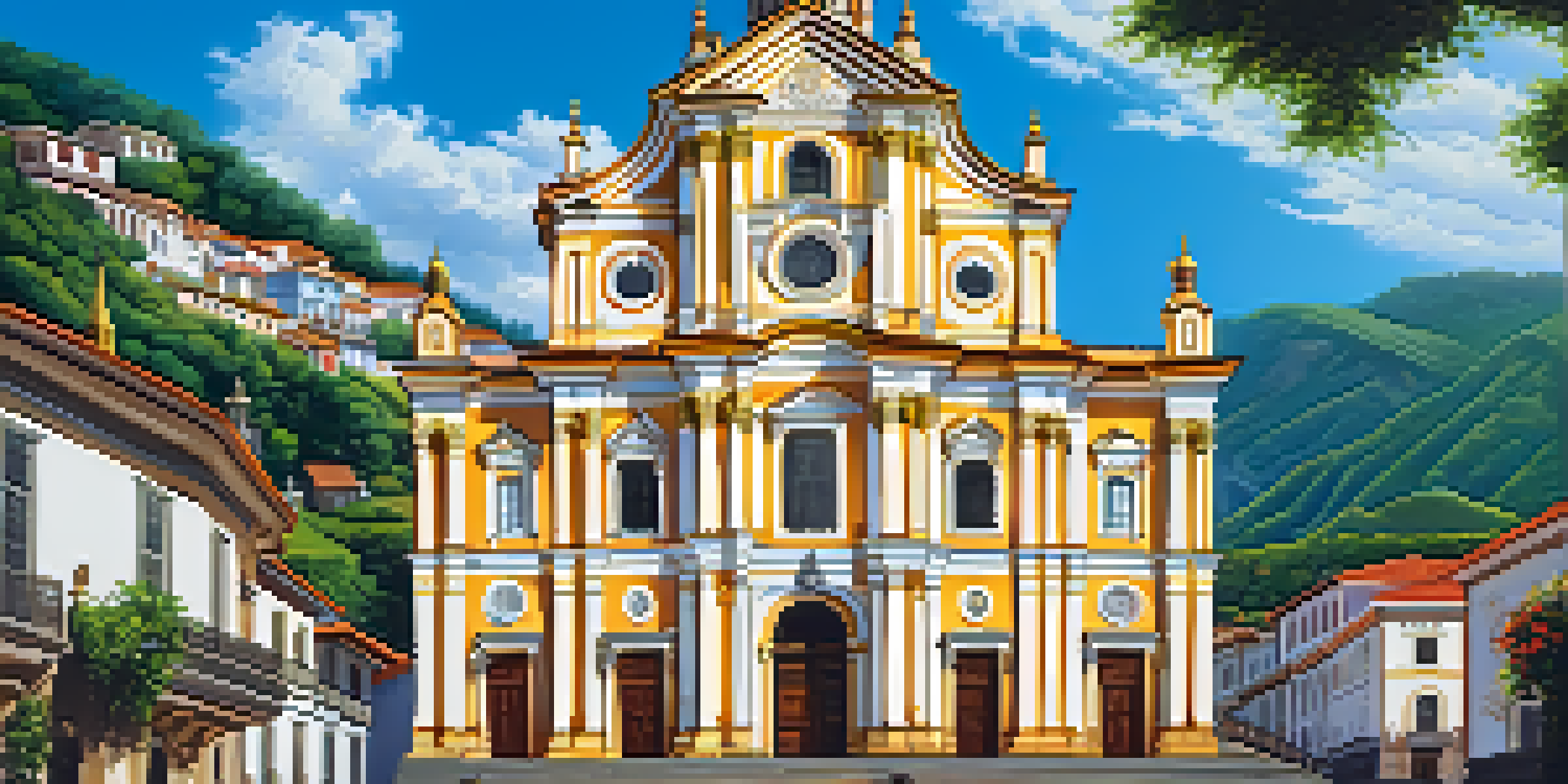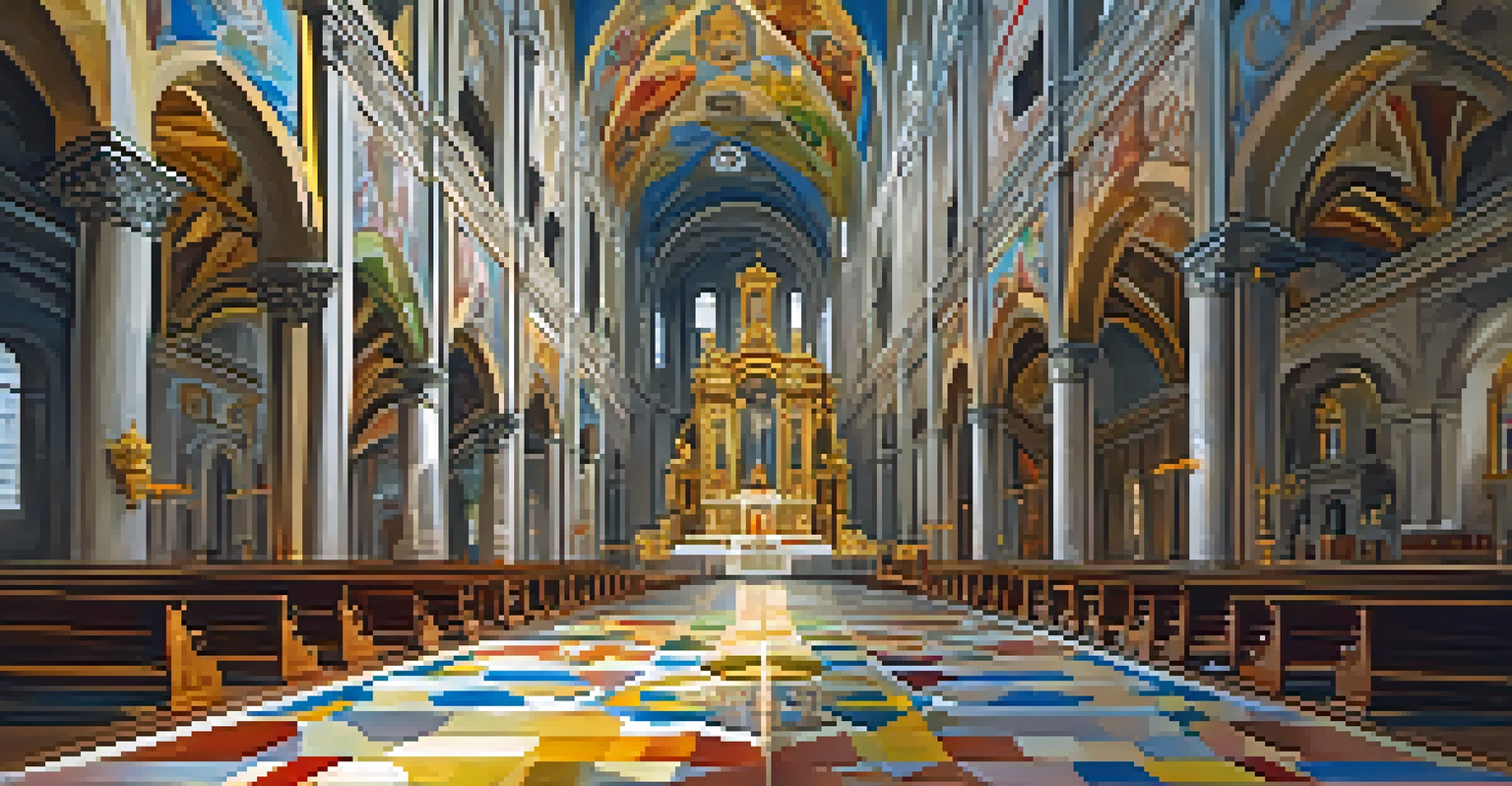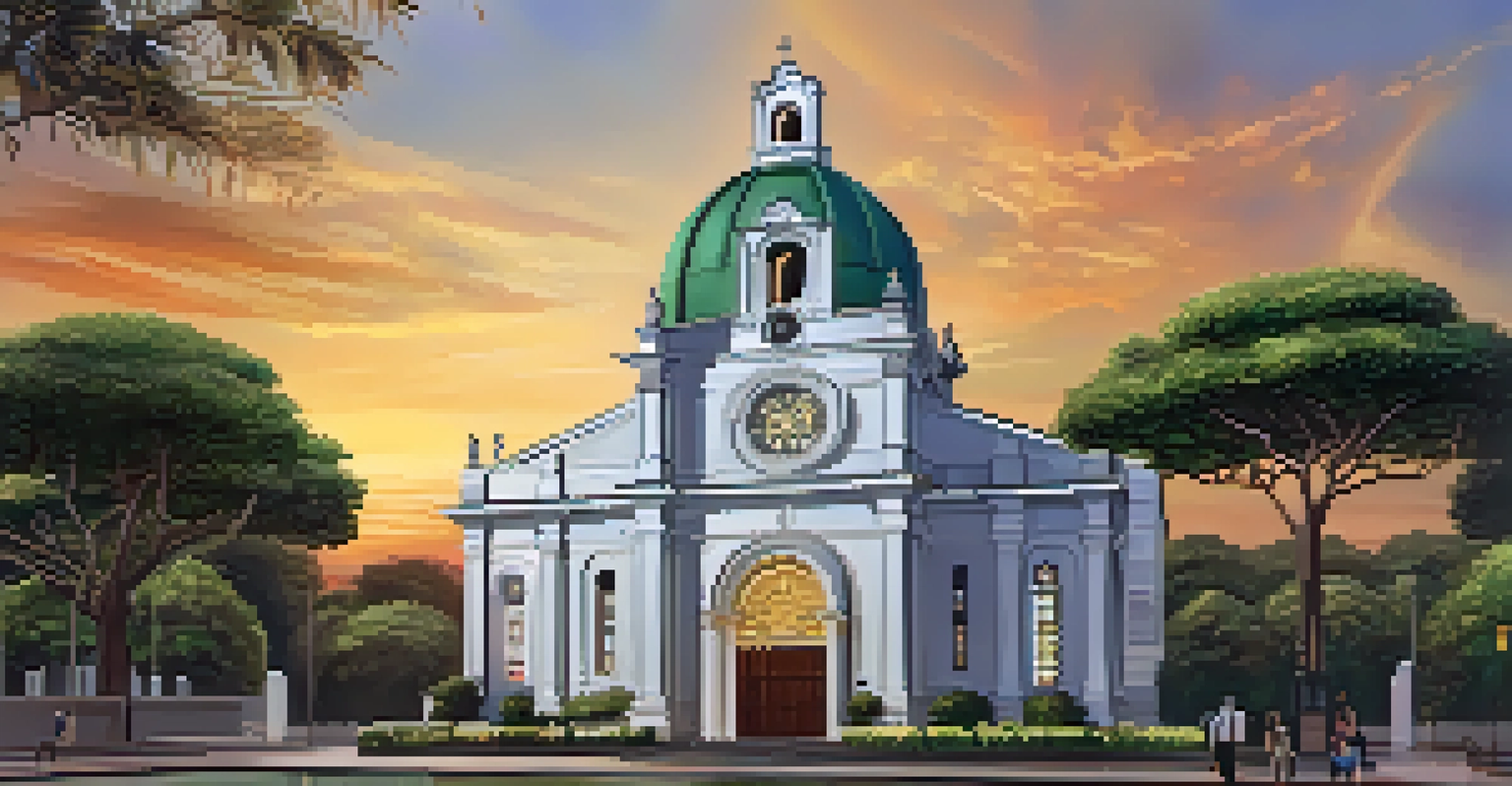Brazil's Baroque Churches: Architectural and Historical Insights

Introduction to Brazil's Baroque Churches
Brazil's Baroque churches are a stunning testament to the country's colonial past. These architectural gems blend European influences with local culture, creating a unique style that tells a story of faith and artistry. From the intricate facades to the lavish interiors, each church offers a glimpse into the baroque era's grandeur.
Architecture is the learned game, correct and magnificent, of forms assembled in the light.
The Baroque period, which flourished from the late 16th to the 18th century, brought a wave of artistic expression that sought to evoke emotion and awe. In Brazil, this manifested in churches that not only served as places of worship but also as symbols of power and wealth. The combination of architectural finesse and spiritual significance makes these structures truly remarkable.
As we delve deeper into this fascinating topic, we'll explore specific churches, their historical contexts, and the cultural influences that shaped them. Understanding these elements enhances our appreciation for the artistry and devotion embedded in each brick and beam.
The Historical Context of Baroque Architecture
To truly appreciate Brazil's Baroque churches, it's essential to understand the historical context in which they were built. The arrival of Portuguese colonizers in the 16th century marked the beginning of a cultural exchange that would influence architecture, art, and religion in Brazil. As Catholicism spread, so did the need for grand churches to reflect the power of the Church and the state.

Baroque architecture emerged as a response to the Counter-Reformation, aiming to inspire faith and devotion among the masses. This style was characterized by dramatic designs, elaborate decorations, and a sense of movement, all of which were intended to captivate worshippers. In Brazil, this resulted in churches that were not only functional but also visually stunning.
Cultural Fusion in Baroque Churches
Brazil's Baroque churches exemplify a unique blend of European, indigenous, and African influences that shape their artistic expression.
The influence of the indigenous population and African slaves also played a significant role in shaping these churches. Their contributions to the artistic and cultural landscape created a distinctive Brazilian Baroque style that set these churches apart from their European counterparts.
Key Features of Baroque Churches
One of the most striking characteristics of Baroque churches is their elaborate facades. Often adorned with intricate carvings, statues, and gilded details, these exteriors are designed to draw the eye and evoke a sense of wonder. The use of curves and asymmetry adds to the dramatic effect, creating a visual feast for visitors.
The past is never dead. It's not even past.
Inside, Baroque churches often feature soaring ceilings, vibrant frescoes, and ornate altars. The interplay of light and shadow, achieved through strategically placed windows and decorative elements, enhances the spiritual atmosphere. This design invites worshippers to pause, reflect, and experience the divine in a profound way.
Additionally, many Baroque churches in Brazil incorporate local materials and craftsmanship, showcasing the region's unique artistic heritage. This blend of European and local influences not only enriches the architectural style but also tells a story of cultural fusion that is distinctly Brazilian.
Notable Baroque Churches in Brazil
Among the most famous Baroque churches in Brazil is the São Francisco Church in Ouro Preto. Known for its stunning interior, which features intricate woodwork and gold leaf, this church is a UNESCO World Heritage site that attracts visitors from around the world. Its design reflects the wealth and artistic ambition of the time.
Another remarkable example is the Cathedral of Salvador, which showcases the grandeur of Baroque architecture with its impressive façade and lavish interior. This church serves as a reminder of Salvador's historical significance as the first capital of Brazil and a center of colonial power.
Significance of Preservation Efforts
Preserving these architectural treasures is essential for maintaining Brazil's cultural heritage and ensuring future generations appreciate their beauty.
The Church of São Pedro dos Clérigos in Porto Alegre also deserves mention, with its towering bell tower and beautifully crafted altar. Each of these churches not only serves as a place of worship but also as a cultural landmark, preserving the legacy of Brazil's Baroque period.
The Influence of Local Culture
While Baroque architecture is rooted in European traditions, Brazil's Baroque churches reflect a rich tapestry of local culture and influences. Indigenous artistry and African traditions often blended with European designs, resulting in unique expressions of faith and creativity. This cultural fusion is evident in the decorative elements, sculptures, and even the materials used in construction.
For instance, the use of local woods for altar pieces and sculptures showcases the skills of Brazilian artisans, while also highlighting the connection to the land. Additionally, the incorporation of indigenous and African symbols into religious art demonstrates a respect for diverse cultural narratives within the context of Christianity.
This blending of traditions not only enriched the architectural landscape but also fostered a sense of community among worshippers. The churches became spaces where diverse cultures converged, allowing for the celebration of faith that was uniquely Brazilian.
Preservation Efforts for Baroque Churches
Preserving Brazil's Baroque churches is crucial for maintaining the country's cultural heritage. Many of these structures face challenges such as environmental degradation, urban development, and the effects of time. Organizations and government bodies are actively working to restore and protect these architectural treasures.
Efforts include restoration projects that focus on repairing structural damage, cleaning artworks, and maintaining the integrity of original designs. These initiatives not only ensure that future generations can appreciate the beauty of these churches but also promote awareness of Brazil's rich history.
Historical Context of Baroque Style
The Baroque architecture in Brazil emerged as a response to the Counter-Reformation, reflecting the power of the Church and the state's influence during colonial times.
Community involvement plays a vital role in preservation, with local citizens often participating in fundraising and volunteering for restoration projects. By fostering a sense of ownership and pride in these churches, communities help ensure that these architectural marvels remain vibrant symbols of faith and culture.
Conclusion: The Legacy of Baroque Churches
In conclusion, Brazil's Baroque churches are more than just beautiful buildings; they are vital links to the country's historical and cultural past. Each church encapsulates a unique story, reflecting the artistic ambitions and spiritual aspirations of the time. Their intricate designs and rich histories invite us to explore the diverse influences that shaped Brazil's identity.
Visiting these churches offers a profound experience, allowing us to connect with the past while appreciating the artistry that continues to inspire. Whether you're an architecture enthusiast, a history buff, or simply someone seeking a deeper understanding of Brazil's culture, these churches provide a captivating journey through time.

As we continue to appreciate and protect these architectural gems, we ensure that future generations can experience the beauty and significance of Brazil's Baroque heritage. The legacy of these churches is a testament to the enduring power of faith, art, and community.